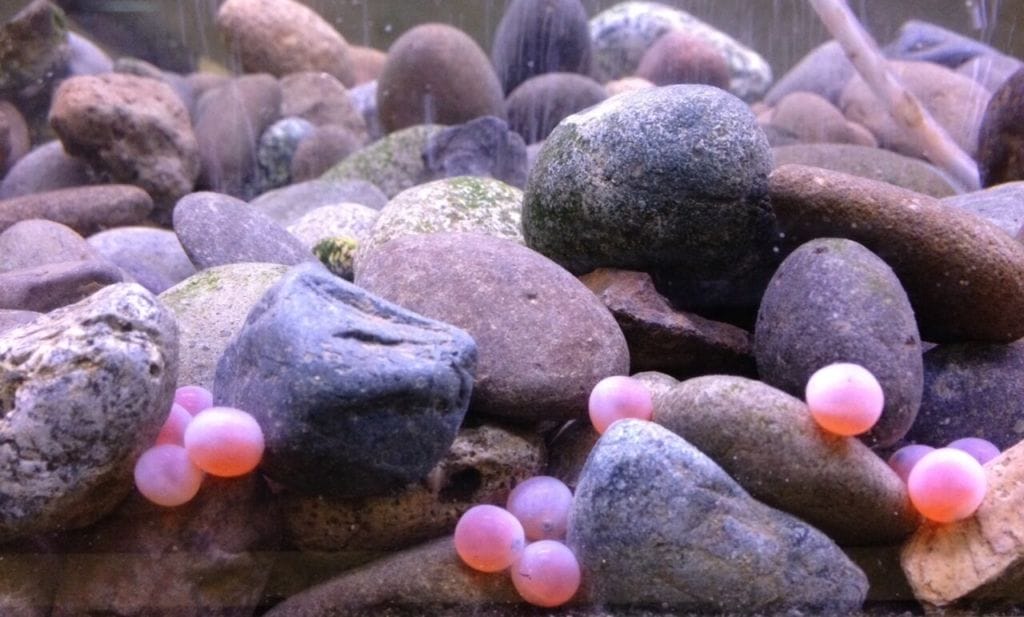How Do Salmon Get Over the Mountains?
Beginning in late summer through the fall, beautifully colored salmon and steelhead can be seen migrating upstream through the Yakima River Basin, all the way to the upper river tributaries and Cascade Mountain reservoirs, swimming thousands of miles to reach their spawning grounds. Many people enjoy watching these truly marvelous creatures swim upstream or navigate through fish ladders to lay their eggs. Yet, a common question, often asked when observing these fish high up in our watershed, is: “How do the salmon get over the mountains?”

Out of the five Pacific salmon species in Washington State, the Yakima Basin is home to three of those species: Chinook or “King”, Coho or “Silver” and Sockeye or “Red” salmon. Steelhead and salmon are anadromous fish which means they are born in freshwater (streams or rivers) but spend much of their life in the ocean, and at the end of their life, they migrate back upriver hundreds of miles to the place where they were born. With such a long journey filled with many hazards, out of a few thousand eggs that hatch, only three to five survive to adulthood. In the Yakima River Basin, our salmon are deposited in the gravels of the upper rivers in the fall, emerge from the gravel the next spring as fry, and wait a year on average before they migrate downstream to enter the Pacific Ocean.
What is their salmon highway you ask? Not west on I-90, but downstream through the Yakima River to the mighty Columbia River and out to the Pacific Ocean at the mouth near Astoria, Oregon.

Historically, the Yakima River was once one of the main producers of salmon and steelhead in the Columbia River Basin. It is estimated that before large-scale Euro-American settlement began around 1850, up to a million adult salmon and steelhead returned from the ocean to spawn annually. Fast forward to today: fall Chinook returns now average 2,000 to 4,000 fish. How could such a historic fish decline in population so rapidly? Warming ocean and river temperatures, historic overfishing, dams and other passage barriers, and habitat loss have created massive survival challenges for salmon on their long journeys to and from the ocean.
Addressing the Barriers
As a native fish that has been one of the traditional “First Foods” to the Yakama Nation since time immemorial and a keystone species for our ecosystem, it is our duty to protect and restore these wild salmonid species, their habitats, and their ecosystems for many future generations to enjoy. Mountains to Sound Greenway Trust partner, Mid-Columbia Fisheries Enhancement Group (MCFEG), is one of the many organizations to focus their efforts on these goals through habitat restoration, education, and community involvement.
Working together within the Yakima Basin Integrated Plan, Mid-Columbia Fisheries has partnered with numerous agencies to sponsor and implement priority habitat restoration, fish passage, and habitat protection projects throughout the basin. The goal of these projects is to improve the 4 C’s of habitat: Cold and Clean water, Connected waterways, and Complex habitat. In addition to habitat restoration, Mid-Columbia Fisheries provides educational and community outreach programs to promote the long-term commitment our society needs to protect these amazing fish.

If you would like to contribute to the protection of our Yakima Basin salmon and steelhead, you can participate in a volunteer work party for habitat restoration, a stream clean-up, or show your support by making a donation to finance future success.





